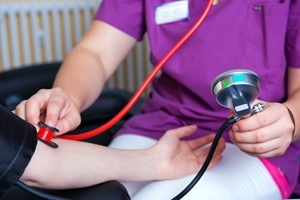A recent state-by-state analysis conducted by the U.S. Centers for Disease Control and Prevention revealed significant health disparities related to high blood pressure that every travel nurse should be aware of. According to a HealthDay News press release, a patient’s blood pressure rate could be influenced by the state that they live in – which is important for traveling medical professionals, as they visit many U.S. states in their line of work.
Less affluent states experience more high blood pressure
Moreover, the study that was lead by the CDC’s National Center for Chronic Disease Prevention and Health Promotion showed that less affluent states have a greater risk for high blood pressure compared to others. States with an average household income of around $43,000 or less, or where one-fifth of the statewide population lives below the poverty line, experience high blood pressure rates when compared to wealthier areas. The study also stated that there are many factors that contribute to this phenomenon, such as policies, local institutions and societal structures, which can vary significantly from state to state.
High blood pressure in the U.S., at a glance
Although the overall percentage of Americans living with blood pressure is around 33 percent, state-by-state levels reveal a far more interesting picture. For instance, 44 percent of Alaska residents have high blood pressure, while only 24 percent of Utah residents suffered from the same condition. Across the U.S., women and adults who were out of work had the greatest risks for developing high blood pressure.
Hypertension is an issue that should not be taken lightly. According to CDC data statistics, nearly one in three Americans has prehypertension. This is characterized with vital signs that are higher than normal, but have not yet reached the high blood pressure phase. Moreover, only 52 percent of Americans who suffer from high blood pressure actually have the condition under control.
Treating high blood pressure is also an expensive endeavor, costing an astonishing $46 billion each year, including medications, time missed from work and medical services. The CDC also estimated that seven out of 10 people who suffer from their first heart attack and eight out of 10 people who suffer their first stroke have high blood pressure. Conditions that are tied to hypertension also result in an around 1,000 deaths every day in the U.S.
Clearly, travel nurses need to be aware of the factors that influence this very common health problem and find ways to encourage their patients to prevent high blood pressure with a more balanced lifestyle. However, there are other ways that travel nurses can contribute to reducing the rates of high blood pressure in the U.S.
What travel nurses can do about health disparities
The aforementioned CDC study revealed a larger issue that spans beyond local high blood pressure rates: health disparities. Travel nurses and RNs in general have likely taken thousands of patients’ blood pressure vitals over the span of their careers, but never thought about the underlying conditions that contribute to these staggeringly high rates of hypertension in the U.S.
According to Nursing World, some of the common illnesses associated with health disparities involved cardiovascular diseases (such as high blood pressure), diabetes and cancer, which are some of the leading causes of illness and death in the U.S. There are many challenges that people from these demographics face, such as access to healthcare at an affordable cost, insurance status, personal choices and social environments.
This is why it is crucial for travel nurses to encourage wellness initiatives to every patient. Although it may seem like a small gesture, it could make a great difference in bringing down the morbidity rates associated with less affluent demographics.

